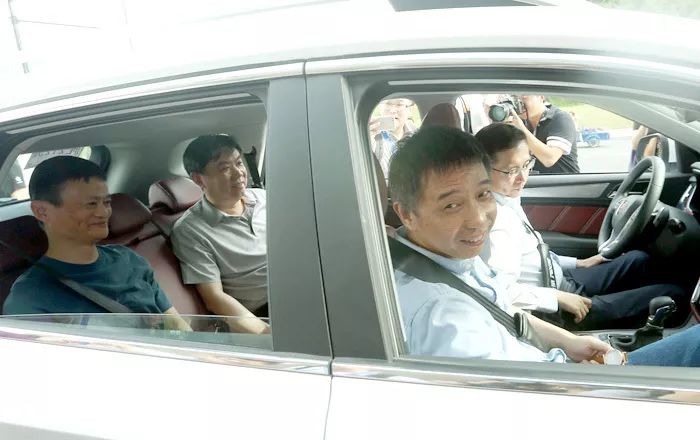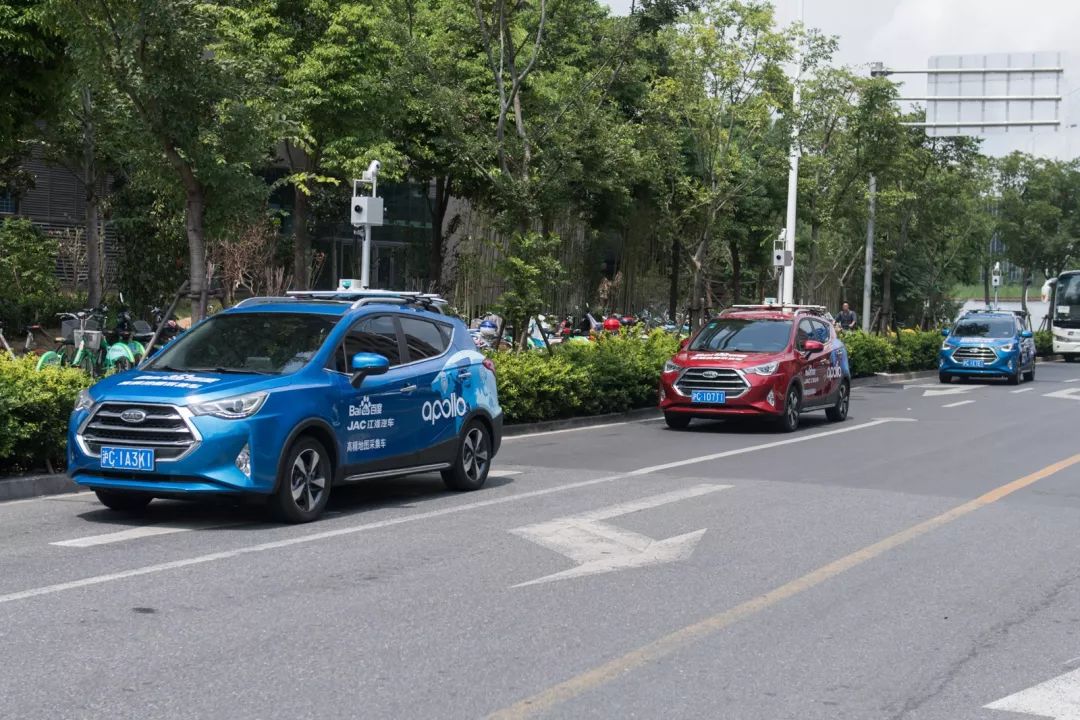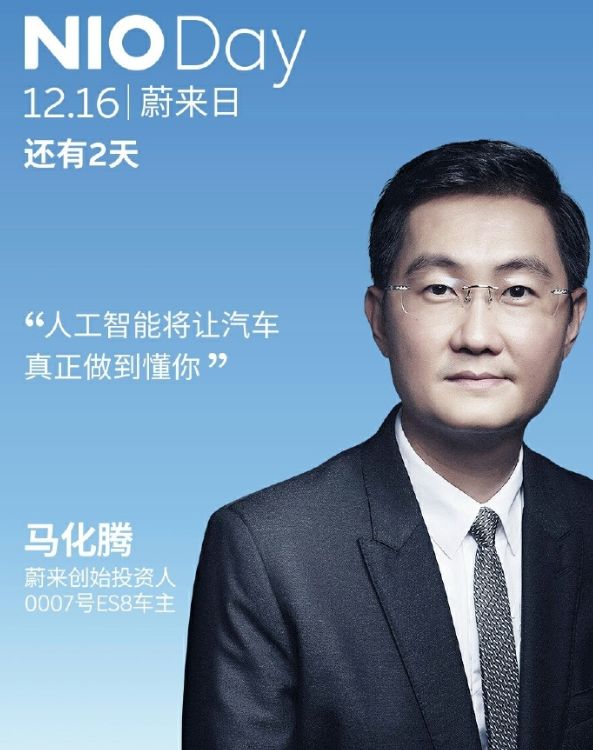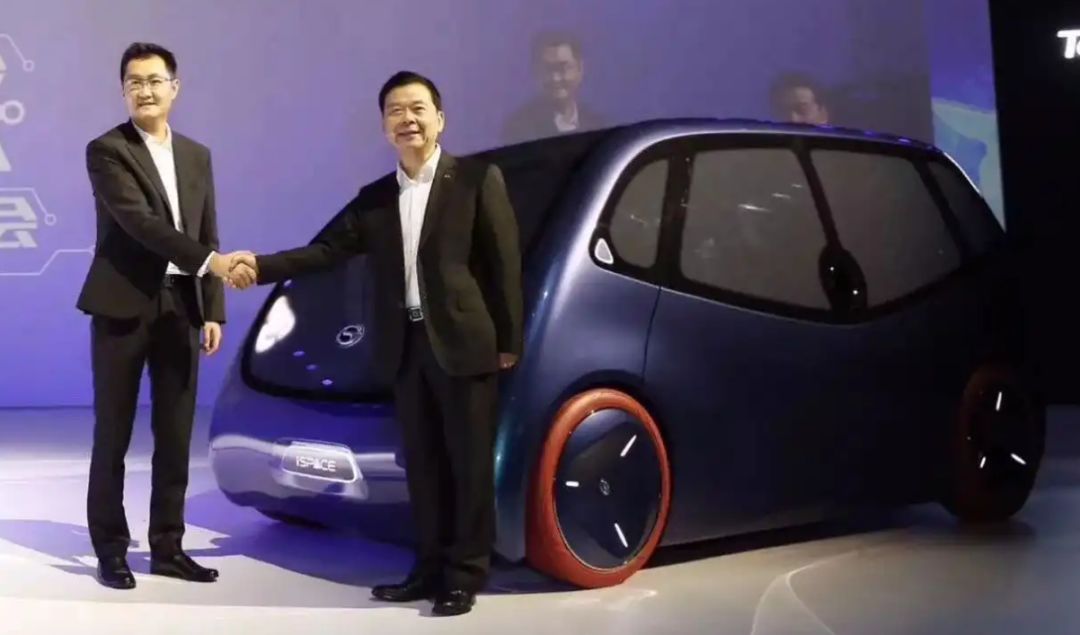On November 1, 2018, with the arrival of Tencent, the battle for the BAT’s (Baidu, Alibaba, Tencent) automotive race officially began.
Alibaba
Alibaba has taken the automotive industry seriously.
This statement was believed by some two years ago when on July 6, 2016, at the Alibaba YunQi Conference, a group consisting of Alibaba Group CEO Zhang Yong, Alibaba Technical Committee Chairman Wang Jian, SAIC Group Chairman Chen Hong, and Alibaba Board Chairman Jack Ma, were seen sitting in a Roewe RX5.

The top management sitting together to jointly promote a company is no small matter. But in reality, Alibaba and SAIC only produced 1 billion RMB that year to promote the integration of the Internet and automotive industries, both of which have a market value of trillions. 1 billion may seem substantial, but Alibaba’s net profit in 2015 was 24.3 billion RMB, and that of SAIC in the same year was 29.8 billion RMB. This was no serious effort, just a tentative assessment.
In “The Innovator’s Dilemma”, Clayton Christensen proposes three options for industry giants entering new markets:
- Acquiring a company with new management mechanisms and values to force the company to transform and upgrade
- Independent small teams to explore and verify, and once successful, immediately increase investment
- Directly transforming and upgrading the company’s strategy and management mechanisms
The first option is typified by General Motors’ acquisition of Cruise Automation, which had fewer than 40 employees at the time of acquisition. This small company cost General Motors only $1 billion to buy a ticket to the autonomous driving era and had a positive impact on the inefficiency of General Motors’ operation mechanism that had lasted for many years.
The third option is more common. In 2009, Alibaba, in 2010, Tencent, and in 2014, Microsoft, all underwent successful transformations.
Alibaba’s entry into the automotive industry is closer to the second option but not entirely. Today, one of the industry’s leading developers of Internet automotive operating systems, Banma Zhixing, was two independent companies at the time – Banma Network, which is Alibaba’s subsidiary, and Banma Information Technology, which is a subsidiary of SAIC.
It is hard to imagine such a collaboration, where two parties are guarded and cautious towards each other, could achieve success. However, relying on the teamwork of the AliOS team and the Banma team, Alibaba successfully developed the Internet automotive operating system.
Reviewing this incident today, two key reasons contributed to Alibaba’s success: first, based on the powerful endorsement of Jack Ma and Chen Hong; second, Alibaba did not require a controlling interest in the joint venture with SAIC, but rather fully respected SAIC’s rich experience in the automotive manufacturing and quality management domains.Until today, Zebra is also an exception in Alibaba’s digital economy. UC, Gaode, Xiami, Youku, Ele.me… Alibaba is persistent in holding and acquiring these companies, with the goal of synergistic growth and evolution of the entire group ecosystem. As Zhang Yong said before, Alibaba’s play is like an army. Any vertical inside Alibaba can find a very strong opponent in the market, but Alibaba focuses on systemic advantages, which is the chemical reaction of everyone together.
However, the companies acquired above are all essentially internet companies. An internet-based car operating system requires Alibaba to drop its attitude and learn and understand the Know-How accumulated by the auto industry for hundreds of years. If the attitude is too high, progress will definitely be slow. Google’s Android Automotive is a typical example.
Based on AliOS, Zebra Zhixing has recently completed the first round of financing led by Guotou Innovation, and Alibaba and SAIC’s shareholding ratios have been synchronized and diluted after the investment.
By connecting the car operating system with the car CAN bus, an OTA service based on account system + cloud service + HMI was launched, aggregating Alibaba’s map resources and entertainment content resources. SAIC Roewe RX5 gains popularity overnight. After the experimental project was successfully verified, the attitude of Hu Xiaoming, Alibaba’s senior vice president and chairman of AliOS and Zebra Zhixing, began to change.
At the 2017 Cloud Computing Conference, he was full of confidence in front of the media: Alibaba Cloud can achieve third place in the world, and so can AliOS for global automakers.
At the 2018 Cloud Computing Conference, Alibaba’s automotive strategy was comprehensively upgraded: using vehicle-road coordination technology to create a new “intelligent highway” aimed at exploring the road for the next twenty years.
Wait, after winning a central control screen, do they want to explore the next twenty years of the road?
On the surface, Alibaba has won a screen. Under the surface, Alibaba Cloud ET City Brain has cooperated with traffic management departments in 11 cities to dynamically adjust traffic signals. The congestion index in Hangzhou decreased by 25% as a result. Gaode has key technologies for landing self-driving cars with high-precision maps, DAMO Academy is developing self-driving cars, Qianxun Positioning provides high-precision positioning, and Alipay is responsible for transforming and opening up the nationwide high-speed entrances and exits for unmanned payment…
Why doesn’t Alibaba’s automotive strategy focus on intelligent cockpit and self-driving, but on less common vehicle-road coordination?
When an autonomous vehicle is running on a road, the efficiency improvement of the entire traffic operation is limited. However, if the vehicles and roads are fully integrated and unified to schedule road and vehicle resources to meet the travel and transportation needs of the entire city, the improvement in traffic operation efficiency will be revolutionary.Can Alibaba take over a city’s transportation system?
On the same day that Alibaba upgraded its automotive strategy, it released Hangzhou City Brain 2.0. Specifically, Alibaba Cloud ET City Brain took over 1,300 traffic lights and intersections, 4,500 roads’ worth of video, and collaborated with more than 20 government departments such as the fire department, emergency medical services, water management, electric power, credit reporting systems, city administration, traffic police, urban management, and construction committees to coordinate applications.
A city’s transportation network, with numerous vehicular flows and countless intersections, is essentially an optimization problem for topological networks. With mass data input and large-scale artificial intelligence algorithms and computing power for “inference digestion,” decision signals are outputted. It may seem anomalous for an enterprise to “govern a city,” but Alibaba Cloud is very adept at doing so.
To sum it up, Alibaba hopes to catch up in the automotive field by leveraging its urban governance expertise to at least make up for its disadvantage in autonomous driving.
Aside from this, Alibaba has one more ace in the hole: Cainiao. Since its establishment in 2013, Cainiao has covered over 2,700 counties across the country and processes 16 billion pieces of logistics data every day, which naturally lends itself to autonomous driving applications for heavy-duty vehicles.
Although Zebra Technologies has not formed absolute dominance in the automotive sector and DAMO Academy’s autonomous driving cars are not necessarily leading the field, what kind of advantages would be produced by synergistically linking all of Alibaba’s travel-related ecosystems within this digital economy? To quote Zhang Yong once more: Alibaba’s method of doing things is like that of an army group, and the focus is on system advantages and chemical reactions produced by everyone acting in concert.
One founder of an autonomous driving company once said, “Nowadays, everyone is waiting for an opportunity. Once they see it clearly, they will put everything they’ve got into it.” For Alibaba, AliOS and Banma Intelligent Driving were stepping stones two years ago, while the upgrade of its automotive strategy at the 2018 Yunqi Conference served as the starting gun. Now, a super giant that invests 1 trillion yuan in forward-looking technology R&D and “invests 1 trillion yuan in logistics. If that’s not enough, we’ll invest several more trillions,” is about to put all its resources into the automotive race.
Baidu
After scouting for two years, Alibaba has decided to throw all its resources into the race. However, Baidu had already started a year and a half ago, with its scout team having set out as early as 2013. Thus, Baidu’s first advantage is: first-mover status.
Many times, a company’s nature and business direction influences each other. For example, the first company to externally output cloud computing capabilities was Amazon abroad, while in China it was Alibaba. There is a strong seasonal demand for server resources in e-commerce, and after the shopping season is over, it is natural for the idle server resources to be exported like utilities such as water, electricity, and gas by the IT industry.
Baidu incubated China’s earliest intelligent driving team, for similar reasons.
Waymo – A Business Built on the Foundation of AI, Deep Learning and Big Data
Waymo, the hottest name in the automobile industry today, has its roots in Google X Lab, which was established in 2009. A laboratory that took on an abundance of projects that were futuristic and, as a result, some of them failed to materialize, such as Google Glass and Google Fiber. Nevertheless, their self-driving autonomous vehicle project succeeded and ultimately triumphed alongside breakthroughs in AI, deep learning, and big data.
Do you remember Baidu’s IDL of 2014, when Li Yanhong, the CEO of Baidu, announced a succession of products such as the wearable device BaiduEye, the smart search device Baidu KuaiSao, the intelligent speech recognition product Baidu Cool Ear, and the small degree of deep learning robot? They were an array of cool but mostly less useful gadgets which were researched by Baidu’s IDL that was established a year earlier. At that time, IDL was comparable to Google X Lab.
The products had their “moment of fame” and became the highlights due to their revelations at the World Conference. After that, they became obsolete due to a lack of commercial prospects and insufficient funding, and were subsequently discarded. In the meantime, IDL assembled a team that began developing and testing autonomous driving systems.
Second, autonomous driving systems have a high-capex and complex development process, and require mastery of several hardware components, such as cameras, LIDARs, millimeter-wave radars, ultrasound sensors, GPS positioning, computing platforms, and line control executive mechanisms. The software requires understanding of perception integration, planning and decision-making, control decision-making, deep learning, AI, and several other disciplines, making autonomous driving systems a high-tech industry that requires significant capital investment.
Yesterday, Baidu Research had added nine world-class AI scientists to its team. Over the last few years, Baidu has invested heavily in technology and talent, and recruited influential scientists such as Andrew Ng and Yuke Zhu, among others. On the one hand, Baidu’s strategic transition of “shutdown, merger, and transformation” has been significant in the last few years, yet on the other hand, their autonomous driving business has not been neglected. This is Baidu’s effort and commitment to the industry.
Finally, “history has chosen Baidu.” On June 1, 2017, China officially implemented the “Cybersecurity Law.” Clause 37 states explicitly that “the operators of the critical information infrastructure shall store within the territory of the People’s Republic of China any personal information and important data collected and produced during operations within the territory of the People’s Republic of China.” Any data deemed critical must be stored, utilized, controlled, and governed utilizing servers located within the sovereign territory of the country. Additionally, the Ministry of Industry and Information Technology’s Communication Administration Bureau Zhang Jianhua stated that “domestic cloud services are not open to foreign-funded enterprises.”The landing of autonomous driving cars requires a more sensitive basic information data than cloud services, called high-precision maps.

At CES booth in January 2017, Lu Qi, at that time the Chief Operating Officer and General Manager of Baidu’s Intelligent Driving Group, said, “In the long run, China’s high-precision map business may be larger than Baidu’s current search business.”
Before that, Lu Qi had represented Baidu in cooperation with European leading map company TomTom and Tier 1 giant Bosch for the collection and drawing of high-precision maps.
In China, there are only a few companies like Baidu that have both the Class-A electronic map collection license and collection capabilities. Foreign companies cannot obtain such qualification, which is why a large number of international automotive giants such as Daimler, Volkswagen, BMW, and Ford joined Baidu’s Apollo.
On November 15, 2017, Qin Yong, Director-General of the Department of High and New Technology (HNT) of the Ministry of Science and Technology announced that the HNT will rely on Baidu to establish a national-level open innovation platform for AI in self-driving cars.
The global automotive industry is turning to autonomous driving, and Baidu was selected because of its early involvement. In short, unless Li Yanhong stops, Baidu still has a great opportunity in the automotive industry, especially since Li Yanhong attaches great importance to it.
Tencent
As for Tencent, Ma Huateng is quite sensitive to the surging of the automotive industry. He hatched the “Harmony Wealth Teng” where Byton and Ai Chi came from at the end of 2014. Alibaba was still exploring with SAIC at that time, and Baidu’s unmanned vehicle had only been in development for over a year.
Who knew that not long after, the two other Harmony Automakers and Foxconn announced their withdrawal from “Harmony Wealth Teng,” and the new alliance was left with only Tencent. But this didn’t stop Tencent’s interest in the automotive industry.
On December 14, 2017, NIO’s App released a preheat poster: NIO’s founding investor and ES8 owner, Ma Huateng, said, “Artificial intelligence will enable cars to truly understand you.”

Apart from NIO, Tencent also invested in WM Motor, Byton, Ai Chi, and bought 5% of Tesla’s shares for $1.8 billion. If we include the field of pan-travel, Tencent also invested in Didi, Lyft, Mobai, 4D New Vision, and even Youxin and Renrenche… why all the investments?”Goldman Sachs in Nanshan District” and “Tencent’s Investment Banking Transformation”, these claims have been repeatedly discussed in many articles such as “Tencent Has No Dreams” and “A Comprehensive Reflection on Tencent’s Strategy” over the past year. Tencent’s attitude towards the Internet field with possible synergies with its own business is extremely mild and restrained. Moreover, even Ali, which has always emphasized synergy and acquisition, has chosen to open up equity in the automobile industry that has a deep threshold.
A year ago today, Ma Huateng appeared at the Guangzhou Automobile Group press conference, walked up to the stage and shook hands with the chairman of the Guangzhou Automobile Group, Zeng Qinghong, and blurted out, “Traditional automakers (Guangzhou Auto) are the protagonists, and we are supporting actors.”

Not only is this true for Guangzhou Auto, this sentence accurately summarizes Tencent’s philosophy of external cooperation since the 3Q War. The day before the Tencent Global Partners Conference, Ma Huateng issued an open letter stating that Tencent will now “root itself in consumer Internet and embrace industry Internet.” But he also emphasized that Tencent “is not here to race and win championships in every industry, but to be the assistant, helping real industries grow more world champions on their respective tracks.”
Despite maintaining its usual restraint, the automobile industry has been raised to an unprecedented height by Tencent since the second day of the Tencent Global Partners Conference. After the speech by Tang Daosheng, the newly established President of the Cloud and Smart Industry Group (CSIG) and Senior Vice President of Tencent, the first to take the stage was the Vice President in charge of Tencent Car-linkage, Zhong Xiangping.
A business matrix containing “vehicle networking, automatic driving, location services, and ride code” was born. Considering Tencent’s existing advantages in social, payment, content, account system, cloud and other fields, Tencent’s entry into the automobile industry is highly imaginative.
For example, in the past two years, the automobile industry has been gradually launching WeChat’s implementation plan in the driving scenario, but Tencent has been slow to act, citing concerns about WeChat’s impact on driving safety. Today, Tencent has released a car-mounted WeChat app that emphasizes fully voice-operated message transfer and calls, along with light interaction, transforming the previously Android-based WeChat app into a “fake car-mounted WeChat”.
Looking back further, Ali found SAIC and created “Zebra,” while Tencent followed suit and created “Wutong Car-linkage” with Changan. To put it this way, Tencent wants to embrace industry Internet and be a real industry assistant, while the automobile industry is the first to take the initiative.The upgrade of the BAT (Baidu, Alibaba, Tencent) car battle seems sudden, but in reality, when we look across the ocean, the confrontation between Apple, Google, and Tesla is also inevitable. Do not easily comment on which company, B, A, or T, has a greater chance of winning, just as Wang Xing, the founder of Meituan, said: “there is no real endgame, endgame is originally a term used in chess, but the actual situation now is that the chessboard is still expanding.”


- Apple, Google, and Tesla: reshape the automotive industry ten years later* Zebra Leads, Alibaba Upgrades Field Battle of Automotive Industry

This article is a translation by ChatGPT of a Chinese report from 42HOW. If you have any questions about it, please email bd@42how.com.
